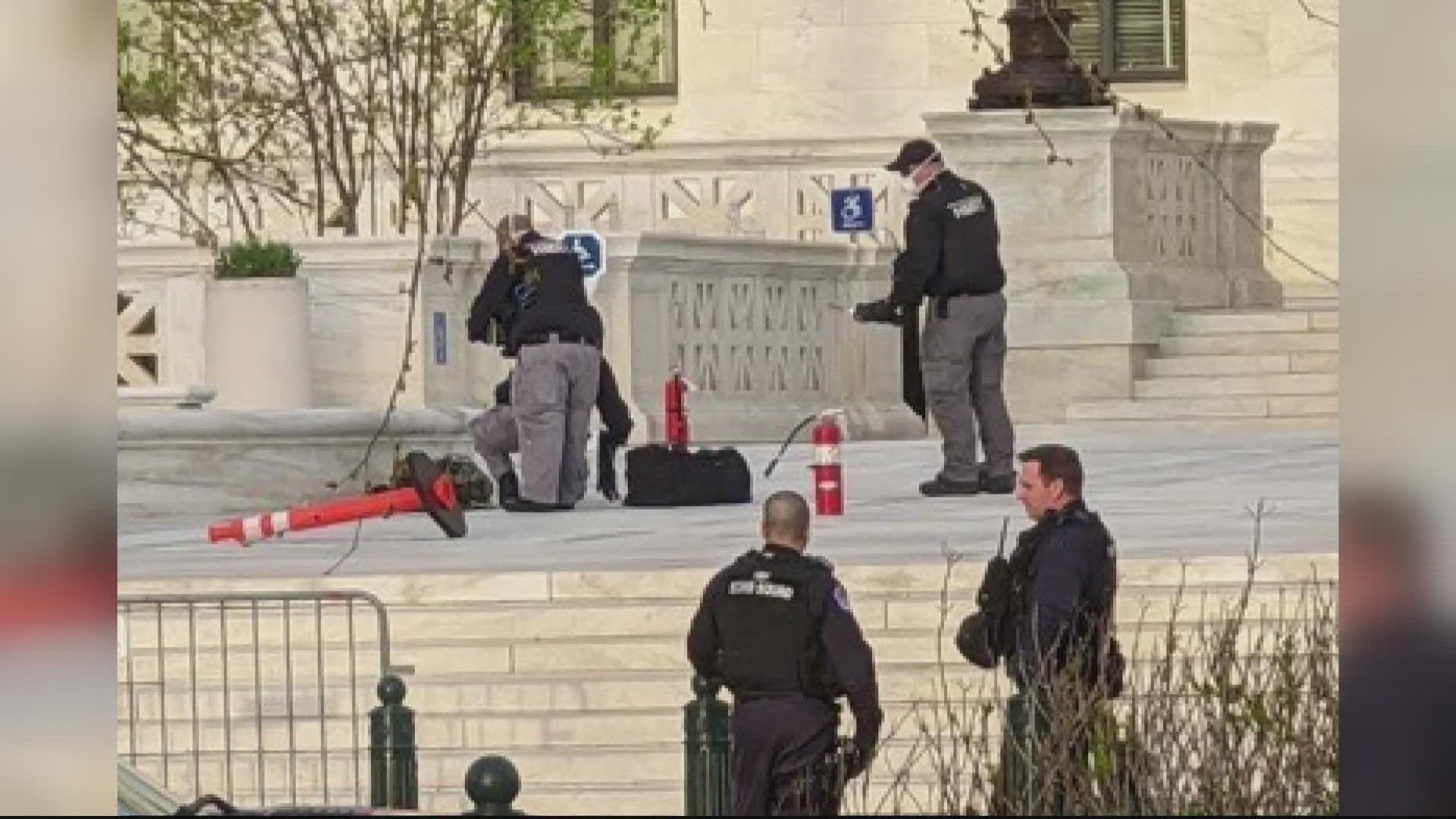WASHINGTON — A man who died after setting himself on fire outside the U.S. Supreme Court building on April 22 - Earth Day - was described as an environmental activist by a friend, according to 9News in Denver.
Emergency medical crews were called to the Supreme Court around 6:30 p.m. on Earth Day after a man set himself on fire outside the building. Police said Saturday that the man, Wynn Bruce, 50, of Boulder, Colorado, had died.
On Twitter, a woman who said she was a friend of Bruce's who works at the Environmental Defense Fund said, "This act is not suicide. This is a deeply fearless act of compassion to bring attention to climate crisis."
On Bruce's Facebook page, he recently edited one of his posts related to climate change to include a fire emoji and the date April 22, 2022 – the day he set himself on fire.
Chris King was Bruce's next-door neighbor for about 20 years and said he saw Bruce almost every day.
"He was a very quiet person, kept to himself, lived alone, had a cat. He was, you know, a sweet guy," King said. "He was a head-injury survivor from an accident he had when he was a teenager."
King said he dropped off Bruce at the bus last Wednesday while heading to Denver to meet with his meditation group. It was the last time he saw his neighbor.
In 20 years, Bruce never talked to him about his passion for environmental issues and never mentioned any plans to end his life, King said.
"I was stunned. One hell of a way to go," he said.
In a written statement released Monday, the leaders of the Rocky Mountain Ecodharma Retreat Center in Boulder, which Bruce attended, said they were grieving his loss and that they had no prior knowledge of his plans to set himself on fire.
Areas around the Supreme Court building were closed for hours after the incident, which Supreme Court Police said happened on the plaza in front of the building at One First Street NE. U.S. Capitol Police tweeted that a medical helicopter landed for an emergency that was "not a public safety issue."
Supreme Court Police, U.S. Capitol Police and D.C. police responded, and Supreme Court spokesperson Patricia McCabe said no one else was injured.
Parts of First Street and East Capitol streets were closed for the airlift and McCabe said the area was closed for further investigation.
Self-immolation, the act of setting oneself on fire and burning to death, can be a form of protest and has been used to make political statements in the nation's capital in the past.
In May 2019, a man died after setting himself on fire near the White House. Authorities said 33-year-old Arnav Gupta of Bethesda was seen by passersby on the Ellipse, engulfed in flames. No motive was uncovered in that incident, but Gupta was reported missing by his family just hours before and they expressed concerns for his physical and emotional welfare. Officials extinguished Gupta and took him to a hospital for treatment, but he died from his injuries.
In April of that same year, the Secret Service reported a man in an electric wheelchair lit his jacket on fire while sitting along Pennsylvania Avenue, outside the north fence line of the White House. Officials said they immediately responded and put out the fire.
In November 2004, a Yemeni national named Mohamed Alanssi set himself on fire outside a White House gate. He had worked as an FBI informant, previous reporting shows, and was upset because he could not travel to Yemen to visit his ailing wife, who had stomach cancer. He also said the FBI had not kept promises it made to him to secure his assistance. Alanssi had severe burns over 30% of his body, the Washington Post reported at the time.

